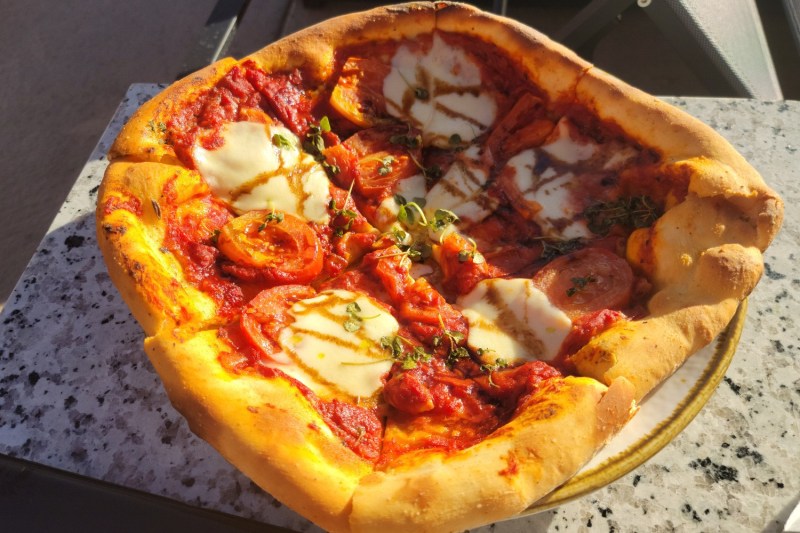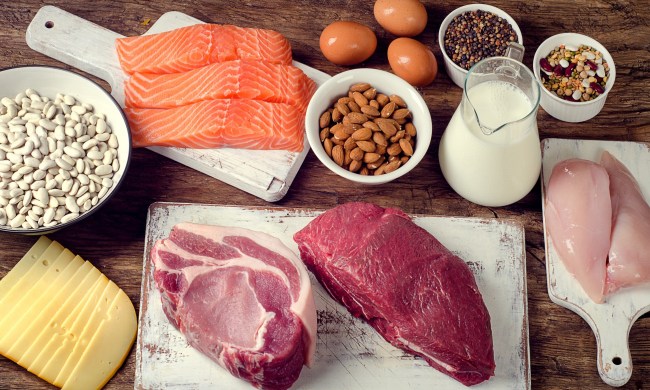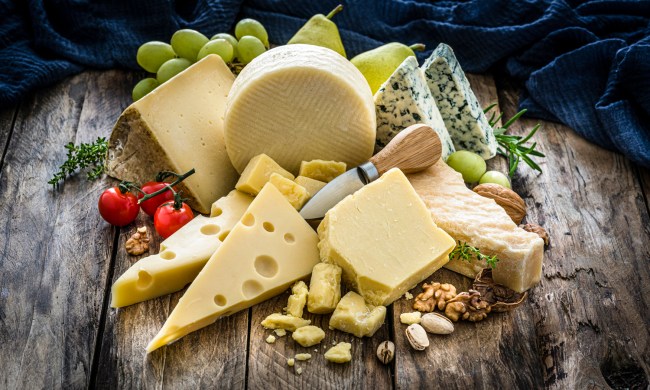Maybe you’re the type who loves their day-old pizza straight from the fridge: cold, chewy, deliciously congealed. Yeah, who wouldn’t love that?
But for those who insist (rightfully) on reheating leftover pizza, the whole endeavor is designed to avoid those factors. And it’s harder than you think. A microwave will get your slice good and hot, but it usually turns your crust into rubber. An open skillet will help that crust crisp back up, but alas, the toppings will remain lukewarm at best.
To really enjoy your reheated pizza, you have to wait at least as long as you did for it to be delivered. Sorry, but it’s true. However, the rewards are well worth the patience. You get to savor your tasty slice just like you did when it came out of the box — possibly even more so, since the flavors have had all that additional time to marinate.
Nailing the right way to reheat your pizza is always an important kitchen skill. So get educated with our short, simple guide showing us how to reheat pizza.
First, what not to do

We at The Manual recognize that disparaging these alternate methods for reheating pizza may generate controversy and even trigger distress within our audience. For that reason, we offer these indisputable explanations for our stance on this controversial topic:
Why the microwave doesn’t work
The small size and lack of ventilation in a microwave mean concentrated high heat on your pizza, without the necessary air circulation to allow the released moisture to evaporate. Instead, that moisture turns everything soggy and soupy. That’s why you can’t pick up a slice of microwaved pizza to eat it — the crust sags like a flag on a windless day. You need hot, dry air surrounding the slice to get it hot while still maintaining its structural integrity.
Why the stovetop doesn’t work
Having your heat source underneath the slice means uneven cooking. All that heat dissipates as it rises, meaning your crust will be charred before your cheese reaches its melting point. (This is especially true for deep-dish or Detroit-style pizza.) You could put a lid over the pan to trap the heat, but then you’re dealing with a similar situation to a microwave, soaking your pizza with moisture released by the heat.
Granted, there are numerous articles and forum threads on the internet that offer step-by-step instructions for “hacking” these pizza reheating methods to achieve satisfactory results. If you like babysitting your pizza and fiddling with extra steps every few minutes, have at it. Call us lazy, but we’re much more of the set-it-and-forget-it mindset. (Hey, it gives us more time to write entertaining and informative articles!)
If you, like us, prefer to putz around with other things during the 10-20 minutes it takes to achieve perfectly reheated pizza, go with the oven method. Knowing how little work you need to put in will make every savory mouthful that much better.
Reheating pizza: The right way

Preheat the oven to 425 degrees Fahrenheit. Place pizza slices right-side up on the pan. When the oven is hot, insert the pan and close the door completely, making sure the oven door is fully sealed. Leave for 7-8 minutes. (If you’re heating just a slice or two, it should be done at 7 minutes. If you’ve got several slices in there or you’re dealing with a deep-dish variety, leave for the full 8 minutes. For very thin-crust pizza, check for doneness at 6 minutes.)
And that’s it. No wrapping foil over the top, no transfers from stovetop to pan or vice versa, no ramekins of water heating alongside the pizza or other such shenanigans. Just simple, straightforward, second-day goodness.
So simple, it might generate some controversy. We get it — you’ve read a million other articles telling you this process of reheating pizza is supposed to be complicated. Rather than argue the point, we invite you to try it for yourself — the proof of the reheated pizza is in the eating, after all. Try our ultra-simple pizza reheating recipe, and we’re sure you’ll love the results.
Or, you could use an air fryer

While the oven method is tried and true, there’s another way to successfully reheat pizza, especially if you’re only reheating a couple of slices.
Using an air fryer will get you hot pizza that is just about as close to fresh out of the oven as it can get. That’s because the air fryer cooks by rapidly circulating hot air, which results in a crispy, evenly heated crust without drying out your pizza. You’ll also get to eat it faster than if you reheated it in the oven.
To reheat your pizza in the air fryer, preheat the air fryer to 350 degrees Fahrenheit. When it is preheated, put the pizza in the center of the tray and set a timer for 4 minutes. Since the reheat times vary depending on the thickness of the pizza, start checking it after 2 minutes and remove it before the crust gets too crispy.
Extra tips

Store your pizza properly
Your finished recipe is only as good as your ingredients. Sure, in this case, the ingredients are already assembled, but it still matters how fresh they are when you embark on the reheating process. As tempting as it can be to toss a half-emptied pizza box into your fridge (especially if it’s late and you’re halfway through your second six-pack), do the responsible thing and wrap that pizza up in an air-sealed bag or a glass storage container, ideally with a layer of parchment paper or paper towel in between slices to prevent them from sticking together.
Preheat the pan
There’s no objective downside to putting your slice on a cold pan and popping it in the hot oven. The toppings will be piping hot, the cheese will be gooey, and your crust will maintain its integrity. But if you’re craving a perfectly crisp crust, stick the pan into the oven while it’s warming, then pull it out, place your cold slice on it, and wait for the magic to happen.
Add a layer of parchment paper
Is there anything worse than opening the oven to find half of your extra cheese topping stuck to the pan? Avoid the cardinal sin of food waste by putting a sheet of parchment paper between your slice and the pan. (Don’t fall for the aluminum foil substitute, since cheese can stick to the foil just as easily as to a metal pan.)
Place the pan on the lowest oven rack
With the pan as low as possible in the oven, your slice will reheat from the bottom up, ensuring that your toppings don’t shrivel before your crust gets crisp.


